Established in 1948, the National Bleeding Disorders Foundation has long been one of the nation’s leading organizations dedicated to serving patients and families living with inheritable blood and bleeding disorders such as hemophilia, von Willebrand disease, ultra-rare platelet disorders, and more.
In celebration of this momentous milestone, NBDF will have a variety of celebratory events, content, and programming throughout the year as part of “The Red Thread” which will tie together the organization’s history and achievements throughout the years.
Activities include regional celebrations, interactive social media – including a regular Tuesday Trivia series on Instagram – history-themed webinars, legislative lookbacks, and more. Most notably, an interactive timeline at bleeding.org/75 will allow community members to explore the various intersections of NBDF’s most important moments. Throughout the anniversary year, NBDF will also shine a light on the important work and legacy of its expansive nationwide network of over 50 chapters.
Discover the story of NHF alongside major medical advances throughout the seven and a half decades. Learn more about the organization’s origins starting in 1948, to its modern day legacy. The historical timeline below can be explored on a desktop or mobile browser.
To request sources for individual facts, email us at communications@bleeding.org
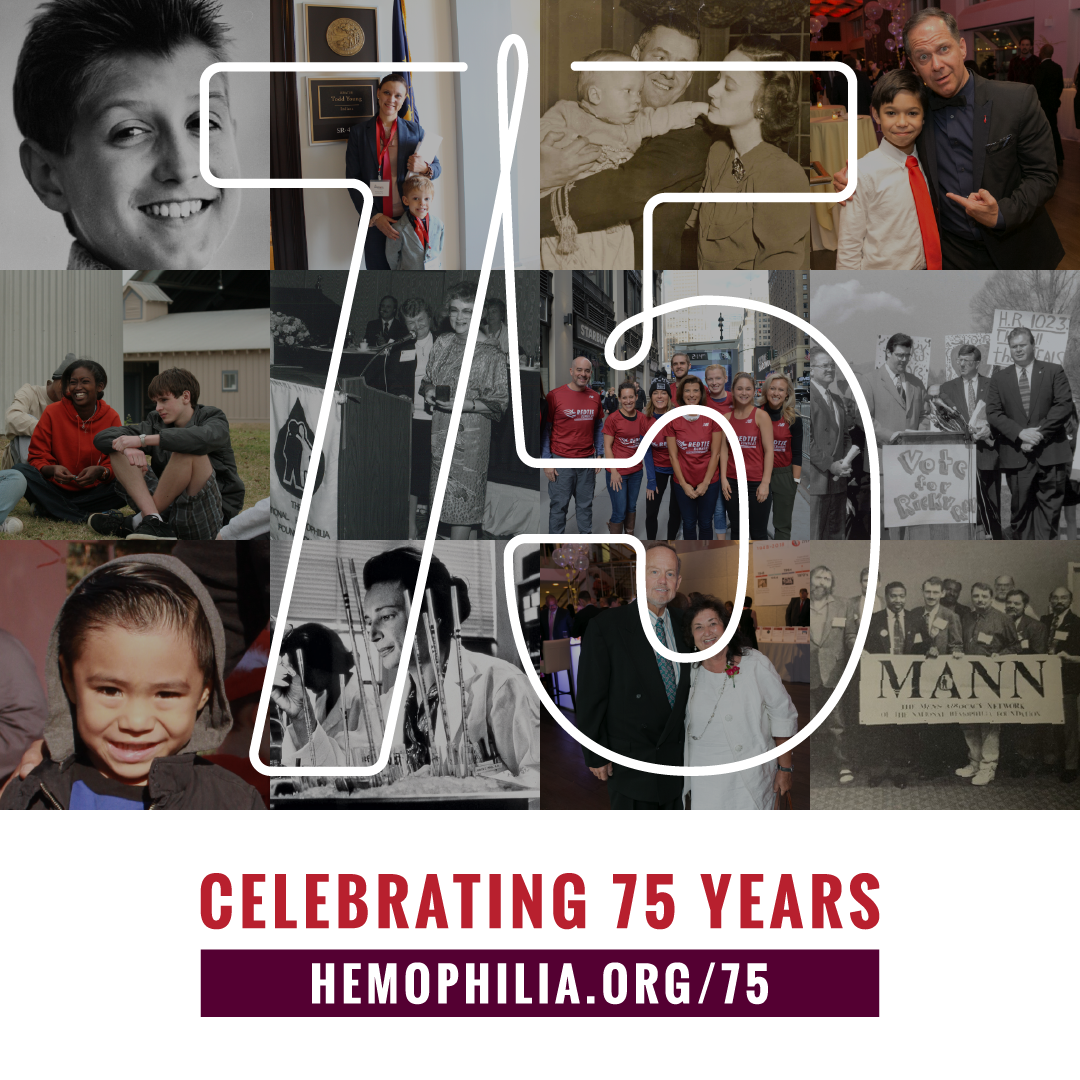
1940s

Lee, the son of NHF's founders, was born in 1941* but was not diagnosed with hemophilia until he experienced an abdominal bleed 14 months later. *NOTE: Some public records indicate Lee's birth year as "about 1942" despite NHF's official record memos having his birth year listed as 1941.

In 1946, Dr. Henry Jordan, a surgeon and medical trustee of NHF, began a program for the orthopedic treatment of hemophilia patients. The study was funded and conducted in cooperation with NHF, and was run out of Lenox Hill Hospital in New York City. The study included 110 patients and ran through 1956.

While on a subway train in NYC, Robert Lee Henry reads an article that inspires him to form NHF.
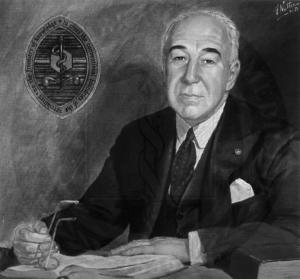
Edwin Cohn from Harvard University develops “plasma fractionation” in order to prepare products such as albumin and IgG for the blood volume expander. Nowadays, most of the modern human plasma fractionation industries are based on Cohn’s method.
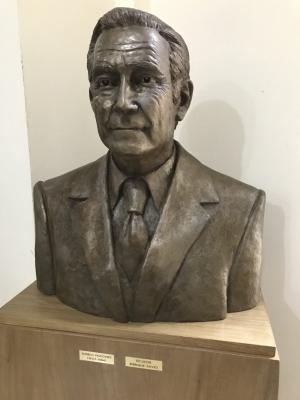
In 1947, Dr. Alfredo Pavlovsky, a doctor in Buenos Aires, Argentina, distinguished two types of hemophilia in his lab: A and B.

On April 7, 1948, 61 nations attended the first World Health Assembly and signed the constitution of the World Health Organization.

On June 15, 1948, Robert Lee Henry files a Certificate of Incorporation with the State of New York Department of State for the Hemophilia Foundation.
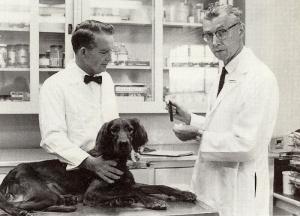
The discovery of canine hemophilia, which allowed for controlled experimentation, led to great strides in both genetic and biochemical research toward the treatment and cure of hemophilia.

NHF is deemed a charitable organization by the U.S. Internal Revenue Service.
1950s
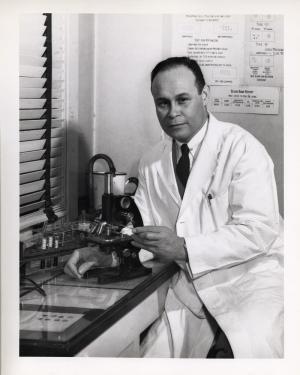
Dr. Charles Drew, an innovator in modern blood transfusions and a leader in inspiring health equity efforts for African American patients and physicians, passes away suddenly in a car crash.
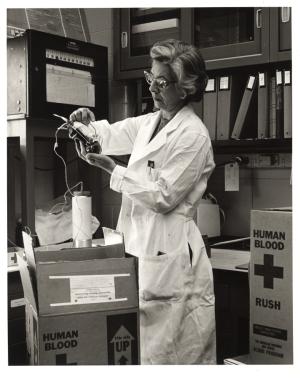
Development of the plastic bag revolutionizes blood collection.
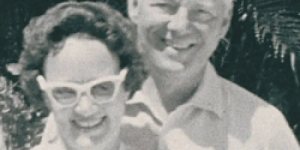
The Henry family is featured in an article in McCall's magazine, drawing attention to their experience with hemophilia and that of other families.
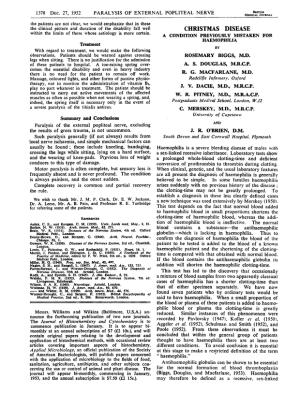
Hemophilia B is first referred to as "Christmas Disease" in a 1952 edition of the British Medical Journal. The condition was dubbed with the name not for the article's publication during the holiday season, but after it focused on a then five-year-old boy named Stephen Christmas.
Researchers in San Francisco, New York, and Oxford describe a new type of hemophilia, arising from a defect in what is now known as factor IX (9). Rosemary Biggs from Oxford, UK, named it Christmas disease, after the first patient, Stephen Christmas.
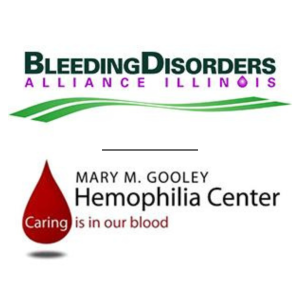
Chapters form in Rochester and Chicago.

The International Committee for the Nomenclature of Blood Clotting Factors was established with one of its primary objectives the development of a common scientific terminology. The committee consisted of 23 members from 15 countries, all of whom played significant roles in the discovery or application of knowledge regarding these factors.
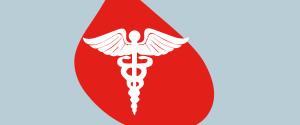
The first meeting of NHF's Medical and Scientific Advisory Committee (MASAC) is held.
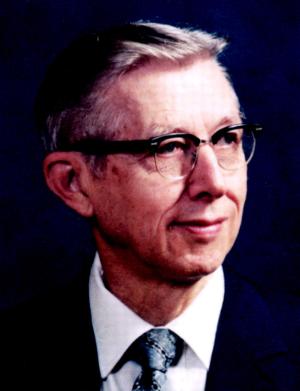
Dr. Kenneth Brinkhous is named as the first president of MASAC.
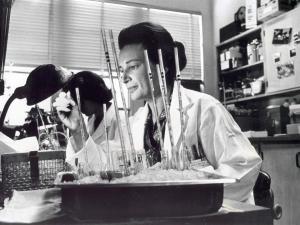
Dr. Judith Graham Pool publishes her first research paper on hemophilia.
Factor XII (also called Hageman factor) was first discovered in 1955 when a routine blood sample of a man named John Hageman had prolonged clotting time in test tubes. Hageman was then examined by hematologist Oscar Ratnoff, who found that Hageman lacked a previously unidentified clotting factor, even though he had no hemorrhagic symptoms.
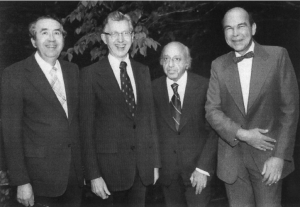
American pathologists Robert Langdell, Robert Wagner, and Kenneth Brinkhous develop intravenous infusions of factor VIII (8).

A 10-year study on joint damage run by NHF medical trustee Henry H. Jordan concludes. A few years later, Henry would publish a monograph on his findings involving 56 hemophilia patients.
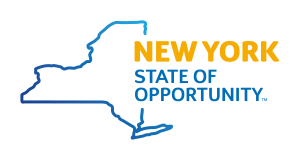
On February 21, 1956, a "Certificate of Change of Name of The Hemophilia Foundation, Inc., to "The National Hemophilia Foundation" is filed in the New York Department of State.
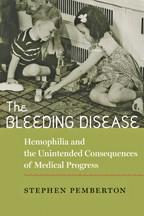
At a board meeting in Chicago, NHF hands over business functions from volunteers to official staff, an effort lead by board secretary Margaret Hexter, who lived in Illinois and had a son with hemophilia.
Dr. Martin Rosenthal is named NHF's first medical director.
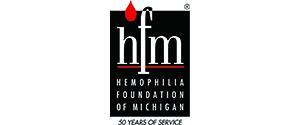
Hemophilia of Michigan forms.

NHF hosts its first symposium where MASAC presents its findings.
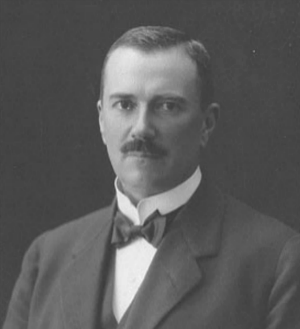
Researchers in Sweden identify von Willebrand factor as the cause of VWD.
Howard Coring Jr. is hired as the first official executive director of NHF.

Dr. Henry Jordan, a trustee of the medical advisory council of the National Hemophilia Foundation, publishes a well-received book on treatments for hemophilic arthropathy (joint damage). The research cases featured in the book were funded by NHF.
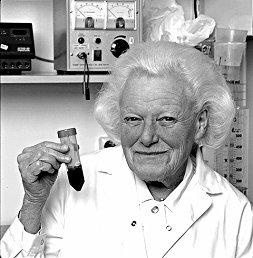
Inga Marie Nilsson, a Swedish physician, begins prophylactic treatment in boys with severe hemophilia A.

An article in an April 1959 issue of Reader's Digest draws mass attention to the challenges facing patients and families with hemophilia.
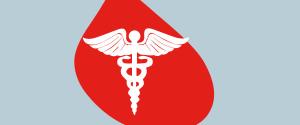
NHF hosts another symposium; MASAC presents its findings and publishes a paper.
1960s

On March 27, 1962, Rep. John Fogarty asks Congress to increase funding for hemophilia research and treatment.

John Walstrom, the chairman of NHF, pens a letter to Congressman John Fogarty, in which he dubs 1962 "the most important year in the history of the foundation" given the "substantial appropriation for hemophilia research" in a bill that had just been passed by the House.
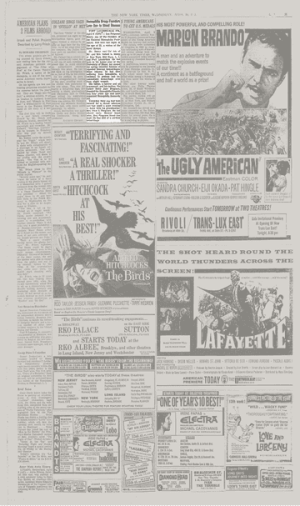
Lee Henry Ferguson passes away due to complications from hemophilia.
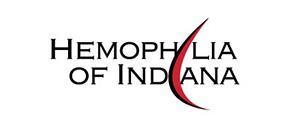
The Indiana Chapter forms.

NHF grows to 23 chapters nationwide.
An article in the scientific journal Nature details the complex clotting process, calling it the coagulation cascade.
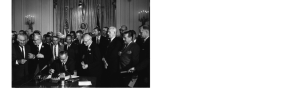
The U.S. Congress passes the Civil Rights Act.
John Walsh replaces Coring Jr. as the NHF executive director.

NHF hosts another symposium; MASAC again presents its findings and publishes a paper.
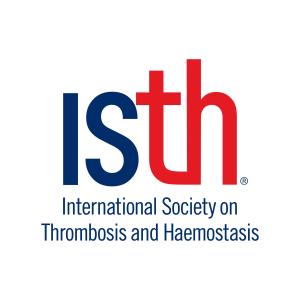
The International Committee on Thrombosis and Haemostasis (ICHT) forms in 1964. This body, in turn, promotes the formation of the current International Society on Thrombosis and Haemostasis (ISTH).

At the 1965 meeting of the World Federation of Hemophilia in Paris, Dr. Martin Rosenthal, NHF's medical advisor, presents on the importance and responsibility of his role and that of the Medical Advisory Council of NHF.
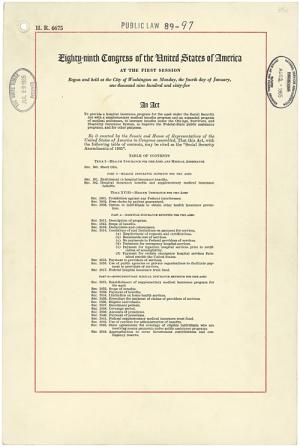
On July 30, 1965, President Lyndon B. Johnson signs into law legislation that establishes the Medicare and Medicaid programs.
Dr. Judith Graham Pool publishes a paper that notes her discovery that slowly-thawed frozen plasma yields deposits high in Factor VIII. These deposits, called cryoprecipitates - or cryo -, are found to have much greater clotting power than plasma and are given to hemophiliacs to stop bleeding episodes.
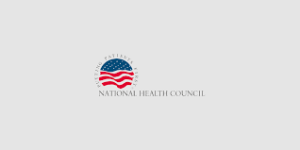
NHF becomes a member of the National Health Council.

First NHF Award of Excellence is given.
In 1966, Dr. Jeanne Lusher is the first individual to ever identify inhibitors as antibodies to factor VIII.

Over the course of 18 months, NHF worked with chapters throughout the U.S. to learn more about the nature and needs of adolescents with hemophilia. Results were presented at the 1968 meeting of the World Federation of Hemophilia in Montreal, and were also published in the December 1969 of Vocational Guidance Quarterly.

Dr. James F. Garrett, director of federal research into vocational rehabilitation at the U.S. Department of Health, Education and Welfare, receives NHF's first-ever Humanitarian Award.

The NHI received the NHF's Research and Scientific Achievement Award for its "medical leadership ... tremendous stimulation and support of research activities directly related to the study and treatment of hemophilia."

A 1968 Miami newspaper denotes Timmy Strohbach as "the first poster boy" of NHF.
NHF's first medical director, Dr. Martin Rosenthal, passes away suddenly from a heart attack.
NHF launches the Lee Henry Ferguson Scholarship, a financial aid award for students, which goes on until 1982.
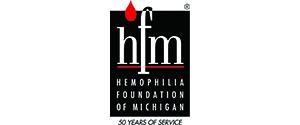
Hemophilia of Michigan opens Camp Bold Eagle, the first summer camp to serve the bleeding disorders community in the U.S.
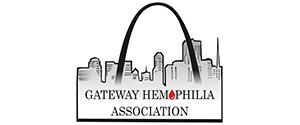
The Gateway Hemophilia Association (Missouri chapter) forms after being approached by NHF to start a local chapter for families with hemophilia. With the growing population and need for support, GHA is started.
1970s
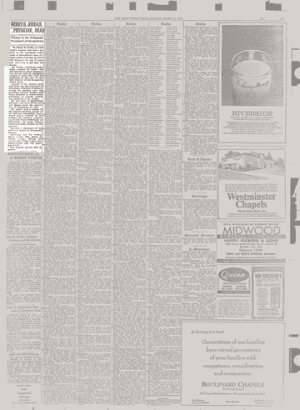
Dr. Henry H. Jordan, an orthopedic surgeon who was a pioneer in the orthopedic treatment of hemophiliacs passed his way. Throughout his career, much of his work was funded by NHF.
Ryan White, who will become the face of the HIV crisis for the hemophilia community, is born.

In 1971, a test for hepatitis B antibodies is developed to identify infected donors; the test is mandated by the FDA for blood donation.

NHF expands to 54 national chapters.
Thanks to NHF and HANJ advocacy, in 1971, New Jersey passes a bill that authorizes the appropriation of $250,000 in state monies to be directed in establishing an assistance program for hemophiliacs.

Dr. Oscar Ratnoff and his colleagues at Case Western University publish their findings on an immunulogical assay test that can identify female carriers of hemophilia.
The National Heart, Blood Vessel, Lung, and Blood Act of 1972 (P.L. 92-423) enlarged institute authority to advance the national attack on heart, blood vessel, lung, and blood diseases. The act provided for expanded, intensified, and coordinated institute activities in accordance with a comprehensive, specified National Heart, Blood Vessel, Lung, and Blood Disease Program to be planned by the director and the Advisory Council.
It also called for establishment of prevention and control programs; development of 15 new centers for basic and clinical research, training, demonstration, and prevention programs for heart, blood vessel, and blood diseases; and development of 15 such centers for chronic lung diseases.
NHF launches the Judith Graham Pool Research Fellowship.
Thanks to NHF advocacy, Pennsylvania dedicates $2M to hemophilia treatment centers.

On Nov. 15, 1973, a diverse group of NHF advocates met before the Senate Committee on Labor and Public Welfare to testify and advocate for the funding of diagnosis and treatment centers.

NHF advocacy helps the state of Illinois dedicate $500,000 in public funding toward hemophilia assistance.

NHF advocates partner with Senator Harrison Williams of New Jersey to sponsor Senate Bill 1326, the Hemophilia Act of 1973, which ultimately passes in 1975. The bill eatabliahes $3M toward a hemophilia treatment center program nationwide.
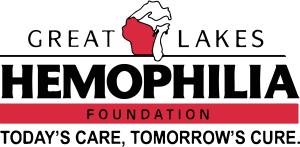
The Great Lakes Hemophilia Foundation becomes an NHF chapter. The chapter was founded in part by Dr. Jacob (Jay) Shanberge, the director of pathology and laboratory medicine at Mt. Sinai Hospital in Milwaukee.
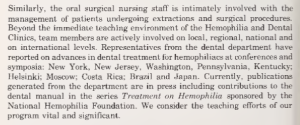
In partnership with Mt. Sinai hospital, the foundation publishes clinical findings on oral surgery and dental care in a manual series called Treatment on Hemophilia.


George King was elected president of NHF.
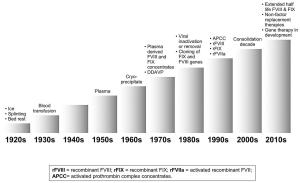
For many patients, at-home care becomes a reality thanks to the industrial manufacturing and commercial availability of freeze-dried plasma concentrates of FVIII for HA and of the coagulation factors (II, VII, IX, X).


The NHLI was renamed the National Heart, Lung, and Blood Institute (NHLBI), reflecting an expansion in blood-related activities within the Institute.

In 1976, the Children’s Hospital Los Angeles Hemophilia Treatment Center is established. It is one of the first Hemophilia Treatment Centers in the United States. The Center is originally called the Hemophilia Comprehensive Care Center.

NHF successfully petitions Congress for The Hemophilia Treatment Centers Act of 1975, which authorizes federal funding to establish a network of comprehensive hemophilia treatment centers (Section 606 of P.L.94-63, amended Title XI of the Public Health Service Act) for the care and treatment of individuals with hemophilia. Hemophilia is a collection of genetic disorders that impair the body's ability to control bleeding. Common hemophilias are types A, B, and C. Von Willibrand disease is another genetic bleeding disorder included in these treatment centers. In 1976, approximately $3M are appropriated to fund more than 20 centers.

NHF advocacy leads 24 states to create funding for hemophilia programs and treatment by 1976. Nationally, Senator Edward Kennedy sponsors legislation for public law S.66 in the 94th Congress.

In 1977, the FDA issued a guideline banning most women of "childbearing potential" from participating in clinical research studies. This was the result of certain drugs (most notably thalidomide) causing serious birth defects. At the time, the focus was on protecting the most vulnerable populations at all other costs.
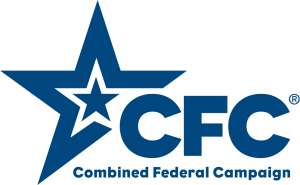
NHF is accredited by the Combined Federal Campaign.

It is discovered that desmopressin acetate (DDAVP) could boost levels of both factor VIII (8) and von Willebrand factor (vWF). DDAVP remains a useful option in mild forms of these conditions.

Thanks to NHF advocates, the Wisconsin Hemophilia Home Care Bill becomes law.
1980s
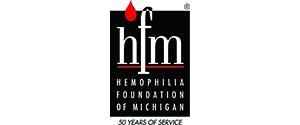
In 1980, Hemophilia of Michigan works with state legislators to extend specialized healthcare coverage provided by Michigan’s Children’s Special Healthcare Services (CSHCS) to adults as well as children with bleeding disorders.
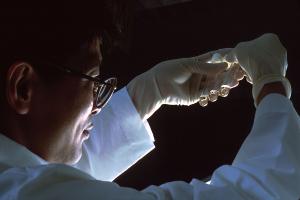
The CDC reports the first cases of AIDS in the USA.
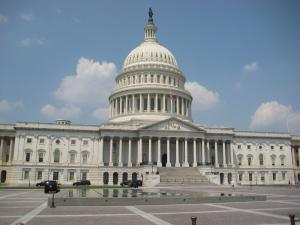
U.S. Congress cites hemophilia as "biomedical success story" after health and economic benefits of new technology treatment and comprehensive care are documented.

NHF agrees to work with CDC, FDA, and NIH to establish surveillance system of hemophiliacs with symptoms of opportunistic infections

On July 16, 1982, NHF was alerted by the Centers for Disease Control that three people with hemophilia had come down with the newly defined immune-deficiency syndrome. When the NHF began to investigate, however, the organization's leaders decided that the risk for hemophiliacs from not using the blood concentrate was far greater than the risk posed by this new disease, which seemed to be affecting very few people.
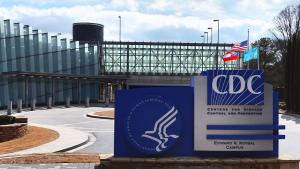
The CDC reports the first AIDS cases in people with hemophilia through the use of tainted blood products used to treat bleeding disorders.
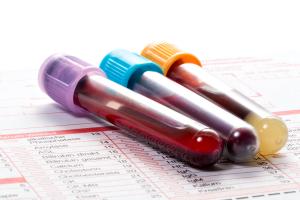
Cloning of factor IX is first reported.

Hepatitis B vaccination is introduced in the U.S.

On January 17, 1983, NHF issued a statement calling on manufacturers of blood products to refuse blood donations by Gay men.

DDAVP is declared by researchers to be a useful alternative to blood components in moderate hemophilia A and Von Willebrand disease.

NHF urges Congress to provide additional funding to support AIDS research.

On July 19, 1983, the FDA's Blood Products Advisory Committee (BPAC) was devoted to the question of what was known about AIDS and its transmission through the blood supply, and what BPAC should recommend to the FDA concerning recalls (FDA, BPAC 1983; see also Chapter 3).
The National Hemophilia Foundation seems to have been the only participant at the BPAC meeting that supported the automatic recall of any product that was found to have been manufactured with plasma taken from a person subsequently determined to have AIDS or to have had characteristics strongly suggestive of AIDS. Indeed, the BPAC recall agenda seems to have been set by an NHF Medical and Scientific Advisory Council (MASAC) position favoring automatic recall (FDA, BPAC 1983). However, that position had been formulated by the NHF prior to the BPAC meeting. At the meeting itself, NHF medical director, Louis Aledort, first stated the NHF position, then followed by stating his personal view that the NHF position had been formulated prior to the consideration of the Pharmaceutical Manufacturers Association assertions concerning the possible impact of automatic recalls on the availability of AHF concentrate (FDA, BPAC 1983).
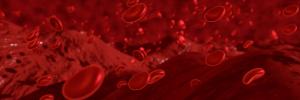
August 25–26, 1983: Hyland Therapeutics and ARC announce recall of lots (two each) from identified donors who were confirmed to have died of AIDS. NHF reaffirms its recommendation that patients maintain use of concentrate or cryoprecipitate as prescribed by their physicians.
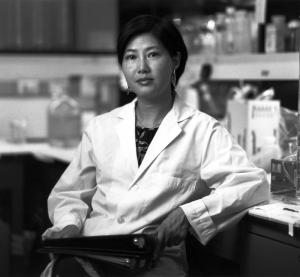
A retrovirus, the Human Immunodeficiency Virus (HIV), is identified in 1983 as the pathogen responsible for Acquired Immunodeficiency Syndrome (AIDS).
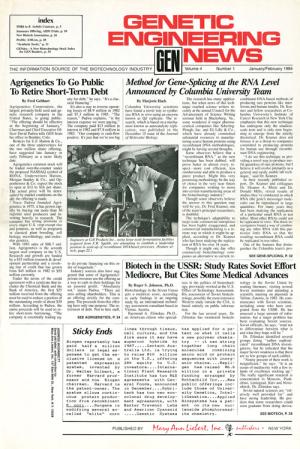
A research team led by Dr. Jay Toole successfully cloned the human gene for the production of the blood-clotting protein Factor VIII.
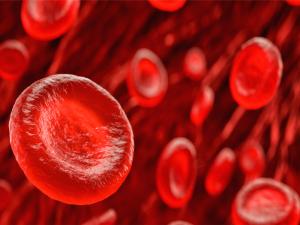
CDC Morbidity and Mortality Weekly Report (MMWR) reported 72% of severe asymptomatic hemophiliac had antibody to LAV antigens using the Western blot test. This virus is now known to be a member of the HIV-1 group of viruses.
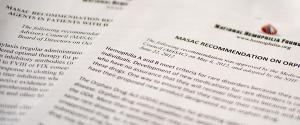
NHF's MASAC recommends use of heat-treated plasma concentrates in order to minimize the risk of transmission of HIV-I (human immunodefficiency virus).
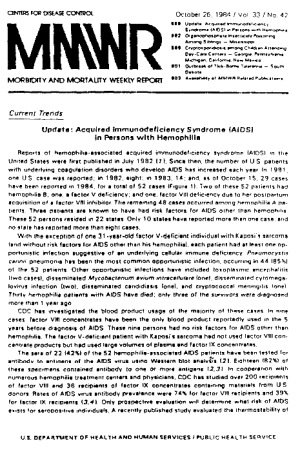
The media reports that 70%-90% of hemophiliacs in the U.S. are infected with AIDS.

Ryan White, a hemophilia patient, is diagnosed with AIDs after a blood transfusion at age 13.

In 1984, Hemophilia of Michigan is appointed the federal Regional Core Center for Michigan, Ohio, and Indiana HTCs.
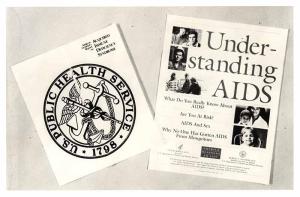
On February 5, 1986, President Reagan finally authorized Surgeon General C. Everett Koop to produce a Surgeon General’s Report on Acquired Immune Deficiency Syndrome. This occurred during a speech given to employees of the Department of Health and Human in which Reagan stated: “I’m asking the Surgeon General to prepare a major report to the American people on AIDS.”
In March 1986, President Reagan proclaims the month "Hemophilia Awareness Month" -- this celebratory awareness month will later become Bleeding Disorders Awareness Month.

On December 2, 1986, NHF executive director Alan Brownstein penned a letter to Surgeon General C. Everett Koop in response to the first Surgeon General's Report on AIDS. Brownstein noted that the report would help "dispel ignorance and prevent discrimination" while also educating and informing.

Isolation of the genes controlling factor VII and von Willebrand's factor production. (Factor VII deficiency results in a rare form of hemophilia, but also may have broad applications in treating more common forms of hemophilia.)
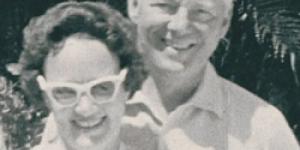
Robert Lee Henry, NHF's founder, passes away.

NHF advocates rally around H.R. 3071, the AIDS Federal Policy Act of 1987, which is sponsored by Rep. Henry Waxman of California.
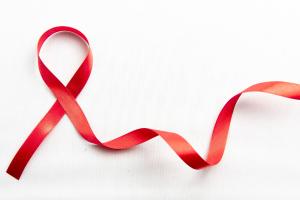
The first World AIDS Day is noted as a global health day on December 1, 1988.

NHF recognized that over 60% of America’s 20,000 people with hemophilia had contracted HIV.

Donald Goldman, Esq., an attorney, who was active in the National Hemophilia Foundation and its chapters for over 25 years joins the National Commission on AIDS among other advocates and medical experts. He coordinated the National Hemophilia Foundation's efforts to improve the safety of the nation's blood supply, began many of its efforts in HIV risk reduction, and introduced initiatives to improve delivery of hemophilia and HIV services to minorities.

An article in the Journal of Biological Chemistry announces that the structure of the gene for human von Willebrand factor is succesfully cloned for the first time.
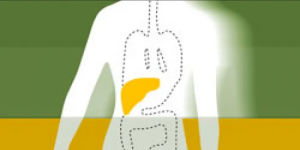
The HCV is first identified; it soon becomes clear that an even higher proportion of people with hemophilia have been exposed to this virus, which can result in chronic liver disease.
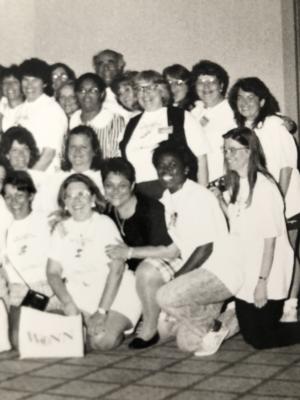
NHF launches the Women’s Outreach Network of NHF (WONN) and the Men’s Advocacy Network of NHF (MANN).
1990s

Ryan White, a hemophilia and AIDs advocate, passes away from complications due to HIV.
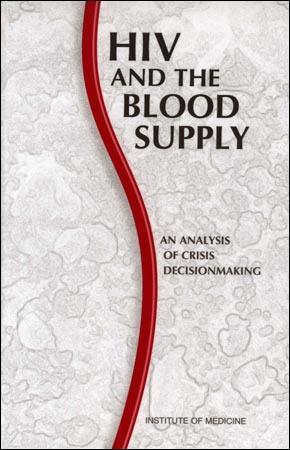
Congress passed the Ryan White Comprehensive AIDS Resources Emergency (CARE) Act in August 1990.
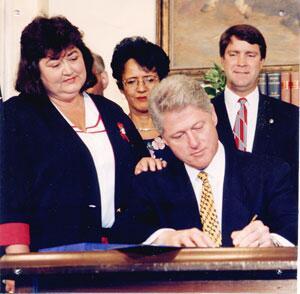
Congress enacted the Ryan White Comprehensive AIDS Resources Emergency (CARE) Act.
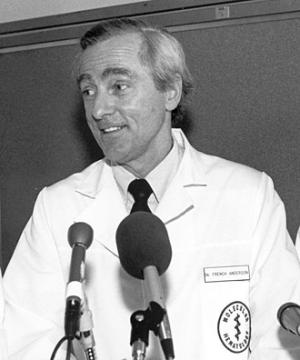
W. French Anderson and his colleagues at the NIH perform the first approved gene therapy procedure on a four-year-old girl born with severe combined immunodeficiency.
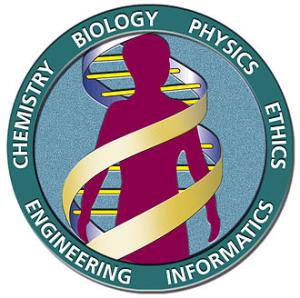
The Human Genome Project begins.

NHF establishes HANDI (Hemophilia and AIDS/HIV Network for the Dissemination of Information).

Thanks to NHF advocates and partners, the Veterans Health Care Act of 1992 designates HTCs as original covered entities
eligible to participate in the 340B program.

The first recombinant factor VIII (8) product is approved by the Food and Drug Administration (FDA).

Dr. Glenn Pierce, a physician with hemophilia, runs for NHF president on a platform of reforming the organization to meet the community’s demands. Pierce appointed Val Bias, a MANN leader, as chairman of the board once elected.
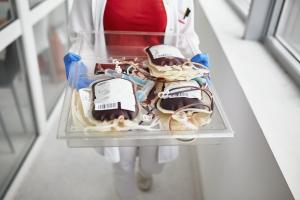
A coalition of hemophiliacs who contracted HIV/AIDS due to improper guidance from pharmaceutical companies and NHF around blood safety file a class action lawsuit.

A 1993 newsletter lambasts NHF for deciding "for its constituents instead of deciding with them" in regards to the ongoing HIV crisis.
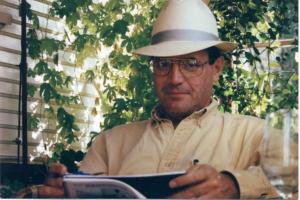
Stephen Christmas, the inspiration behind the alternative name for hemophilia b ("Christmas Disease"), passed away on December 21, 1993

In 1993, the FDA issued a new guideline and formally rescinded the 1977 policy that banned most women from participating in studies. To ensure that the policies for inclusion were firmly implemented by NIH, the Congress made what had previously been policy into law, through a section in the NIH Revitalization Act of 1993.

The camp subcommittee of NHF's Nursing Executive Committee develops the first Hemophilia Camp Program Standards.
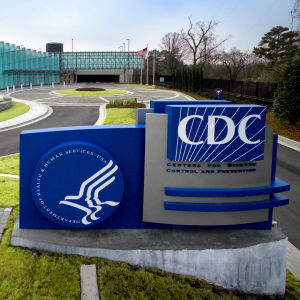
NHF enters a co-op agreement with the CDC to provide education, resources, and programming.

Pharmceutical companies settle with hemophiliacs who contracted HIV/AIDs through blood products.

In a 1994 edition of Blood Coagulation & Fibrinolysis, Dr. H.R. Roberts draws a comparison of the European Accord to MASAC's recommendations for prophylaxis treatments.
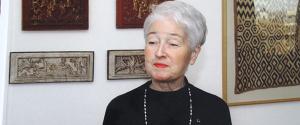
Dr. Jeanne Lusher becomes the first female chair of MASAC.

The World Health Organization and the World Federation of Hemophilia recommend prophylaxis as the treatment of choice in children with hemophilia, based on evidence-driven studies.

MASAC issues recommendations for prophylaxis treatment for individuals with r factor VIII or r factor IX.
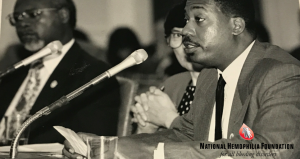
Val Bias, community advocate and future NHF CEO, testifies before Congress to amend the Employee Retirement Income Security Act of 1974, hoping to increase the purchasing power of individuals and employers, to protect employees whose health benefits are provided through multiple employer welfare arrangements, and to provide increased security of health care benefits.
The first Washington Days advocacy event is held in 1996 on Capitol Hill in Washington, D.C.
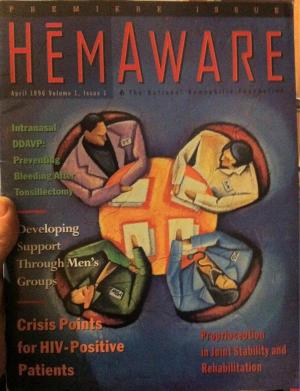
NHF's magazine, HemAware, debuts its inaugural issue.
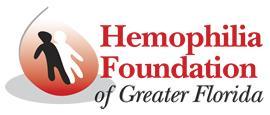
The Hemophilia Foundation of Greater Florida forms and joins NHF as a chapter.

In 1996, the National Hemophilia Foundation initiated an annual Gene Therapy and Novel Technologies Workshop to bring together immunologists, clinicians, and researchers in gene therapy. Over two decades later, the Gene Therapy Workshop still continues today.
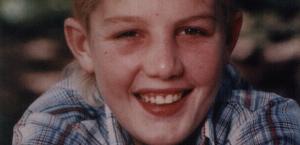
With the guidance of NHF advocates, Rep. Porter J. Goss of Florida introduces the H.R.1023 - Ricky Ray Hemophilia Relief Fund Act of 1998.

The development of a bypassing agent in 1997 offers inhibitor patients an alternative product to help stop bleeds and joint damage.

The first factor IX (9) product granted FDA approval.

NHF marks its 50th anniversary with a special issue of HemAware.

The Ricky Ray Hemophilia Fund Act of 1998 becomes law, providing compassionate payments to individuals with blood-clotting disorders, such as hemophilia, who contracted human immunodeficiency virus due to contaminated blood products.
NHF forms a "Women with Bleeding Disorders Task Force" for the first time.

NHF launches the "It's Time for a Cure!" campaign.

NHF launches a golf fundraising event.
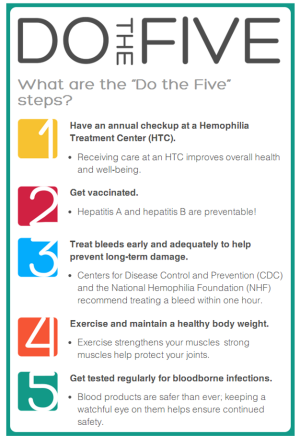
From September 1999 through February 2000, NHF and CDC conducted a national baseline telephone survey to assess prevention knowledge and health practices in the hemophilia community to inform development of an effective national prevention program. Survey results and knowledge in the field were used to identify priority messages for NHF’s National Prevention Program (NPP). The NPP is a public awareness campaign targeting people affected by bleeding disorders, their families, and health care providers. The NPP’s theme is “Do the 5!,” which includes the following five strategies for living a longer and healthier life:
Get an annual comprehensive checkup at a hemophilia treatment center.
Get vaccinated—hepatitis A and B are preventable.
Treat bleeds early and adequately.
Exercise and maintain a healthy weight to protect your joints.
Get tested regularly for bloodborne infections.

Physician-researchers conduct a survey on behalf of NHF's Medical and Scientific Advisory Council to gauge current practices regarding newborn intracranial hemorrhage and obstetrical care and mode of delivery of pregnant hemophilia carriers. The survey queried obstetricians, neonatologists, and hematologists in the United States.

NHF elects its first female board president, Katherine Muir.
2000s

The NHF and CDC conducted a survey, completed in March 2000, aimed at ascertaining knowledge about, attitudes toward, and behaviors associated with key prevention activities among people with hemophilia.
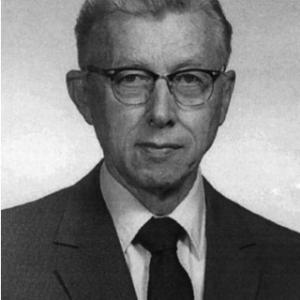
Dr. Kenneth Brinkhous, the first chair of MASAC, passes away.

In 2000, NHF launched Project Red Flag with program partners from the the Centers for Disease Control and Prevention. The national campaign had the aptly phrased tagline, “real talk about women’s bleeding disorders."

NHF launches a Career Development Award to support and fund researchers.
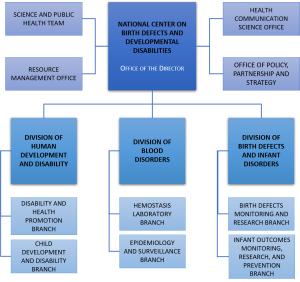
The National Center on Birth Defects and Developmental Disabilities (NCBDDD) was established in April 2001 as a result of The Children’s Health Act of 2000.

HTC roles for Regional director/regional coordinator responsibilities are standardized.
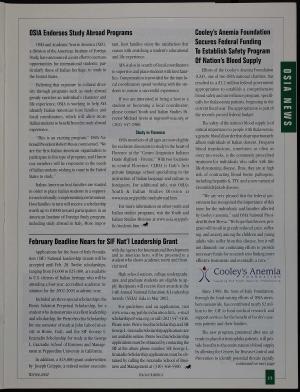
The CDC teams up with Cooley's Anemia Foundation to create a blood safety program modeled after the successful program already in place for hemophilia patients.
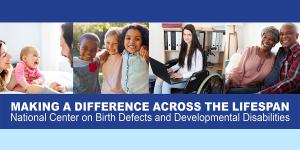
The Division of Blood Disorders joins NCBDDD.

NHF launches NYLI, the National Youth Leadership Institute, providing18- to 24-year-olds with a bleeding disorder, or those who have a sibling with one, leadership opportunities to “encourage personal growth, effect change and positively influence others.”

An assessment of data from CDC’s Universal Data Collection (UDC) system, published in Morbidity and Mortality Weekly Report (MMWR), demonstrates that since 1998, no new infections of hepatitis A, B, and C or HIV have been linked to blood products used to treat hemophilia.
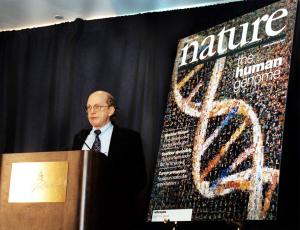
The Human Genome Project (HGP) was one of the great feats of exploration in history. An international team of researchers sequenced and mapped the genome of homo sapiens.

NHF launches its "Connections for Learning" travel grant programs to allow more families to attend the annual conference.

In 2003, NHF launched a Clinical Fellowships program that allows early career physicians to train with mentors at hemophilia treatment centers (HTCs) across the country.
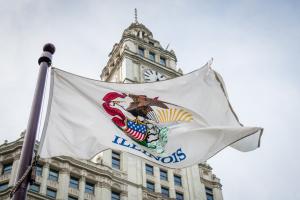
Thanks to NHF and chapter advocates, March becomes "Hemophilia Awareness Month" in Illinois.
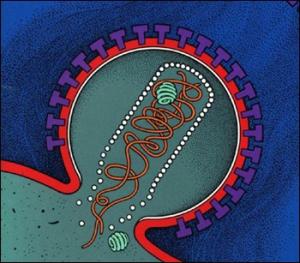
An NHLBI-funded study showed that nucleic acid-amplification testing for HIV-1 and hepatitis C virus further safeguards the nation's blood supply.
On November 8, 2004, Ann-Marie Nazzaro, PhD and Lauren Daitch, MPH, presented novel VWD findings from an NHF and CDC designed study via Project Red Flag about women's knowledge of VWD. The presentation occurred at a meeting of the American Public Health Association.

Results of a CDC survey of women with von Willebrand disease (VWD), published in Haemophilia, find that there is an average of 16 years between the onset of symptoms and diagnosis of a bleeding disorder, pointing to the need for timely referral by gynecologists and other providers to a Hemophilia Treatment Center (HTC) and specialty testing by trained lab personnel to ensure proper diagnosis and treatment.

NHF provides support to Gulf area HTCs and families in the wake of Hurricane Katrina.
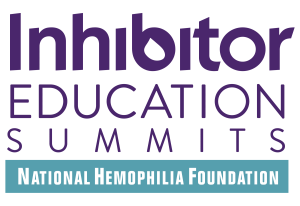
The first-ever NHF Inhibitor Summit takes place in Philadelphia.

Health Center Standards for Camps Serving Persons with Bleeding Disorders, first developed in 1993, were updated at the 2005 North American Camping Conference of Hemophilia Organizations (NACCHO) Conference in Tempe, Arizona.

NHF updates a popular 1996 publication about children safety during physical activities and retitles it "Playing it Safe."


CDC initiates the Hemophilia Inhibitor Research Study (HIRS). Results of this study have been crucial in understanding which hemophilia patients are at highest risk of developing inhibitors (antibodies) that reduce the effectiveness of their treatment products.

NHF announces partnership with race car driver Marco Andretti.

Based on the published results of a clinical trial, prophylactic (preventative) treatment becomes the standard of care in the United States for people with hemophilia in an effort to decrease the frequency and occurrence of bleeds, and thus, prevent joint damage.

NHF’s Medical and Scientific Advisory Council (MASAC) issued a standards-of-care recommendation in 2008 to assist pharmacies providing clotting factor concentrates for home use to patients with bleeding disorders.
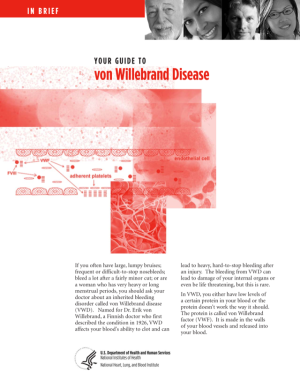
The NHLBI issued the first U.S. guidelines for the diagnosis and management of von Willebrand Disease, the most common inherited bleeding disorder.

Dr. Oscar Ratnoff, a pioneering expert on blood clotting, passes away.
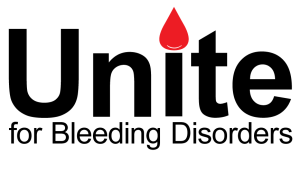
NHF launches Hemophilia Walk program, which becomes Unite for Bleeding Disorders. The first year featured walks in five different cities.

Between July 2008 and May 2009, CDC and NHF conducted a follow-up survey, the results of which were compared with data from the national baseline survey. The follow-up survey focused on many of the same areas as the baseline survey, including knowledge, attitudes, and behaviors associated with key prevention activities among youth and adults with hemophilia. In addition, the 2008–2009 follow-up survey collected information about the dissemination of the national “Do the 5!” prevention campaign messages and message recall of consumers. Both evaluations targeted adult men with hemophilia, parents of sons with hemophilia aged 9 years or younger, and youth aged 13–21 with hemophilia. Throughout this evaluation, findings showed the impact of the National Prevention program and the extent that target audience members are aware of, and able to recall, the prevention messages of the “Do the 5!” campaign.

NHF launches the ACT Initiative (Access to Care Today; Achieving Cures for Tomorrow), which had the overarching goal of developing a stronger national organization that could effectively advance its mission on behalf of the entire community of individuals affected by hemophilia and bleeding disorders. To this end, four major goals were identified and adopted as the foundational plan for the organization’s transformation: 1. A strong network of chapters united with one vision and one voice, 2. A major funder of research for better treatments and, ultimately, a cure, 3. An effective national advocacy program to ensure access to care, and 4. The ability to act as the premier source of information and education. The ACT Initiative brought about growth and transformation for the entire community, and the benefits continue today.

The New York City Hemophilia Chapter (NYCHC) was incorporated in and obtained its 501 (c)(3) status in 2008, and became a NHF chapter in 2009.

Val Bias, a longtime community member and advocate, becomes NHF's CEO.
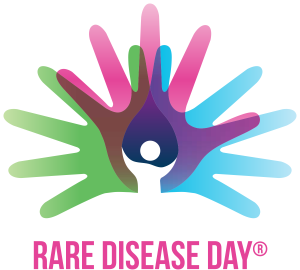
Rare Disease Day begins in the USA.
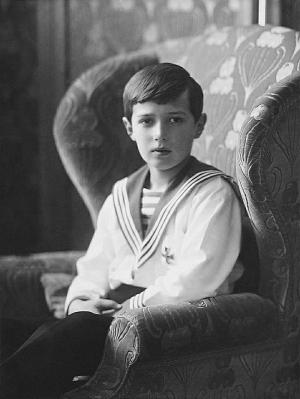
Scientists publish findings that reveal that Alexei, the hemophiliac prince of the Romanov family, specifically had hemophilia B.
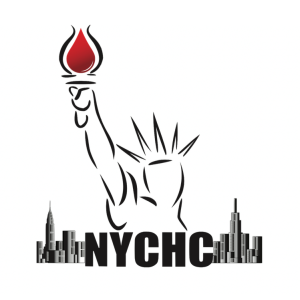
The NYC Chapter joins NHF.
2010s

CDC, along with the Health Resources and Services Administration, the National Institutes of Health, Hemophilia of Georgia, and the American Society of Hematology, hosts the first National Conference on Blood Disorders in Public Health in Atlanta, GA.
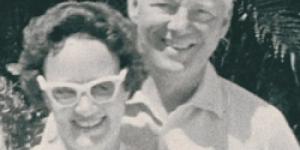
Betty Jane Henry, one of NHF's co-founders, passes away.
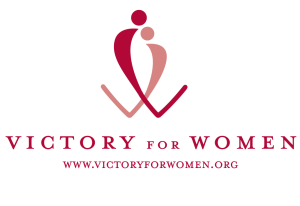
NHF launches Victory for Women to support women living with a bleeding disorder.
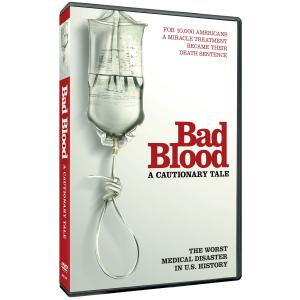
The movie Bad Blood debuts, chronologizing the HIV crisis in the hemophilia community.
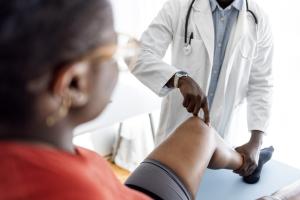
Results from a CDC study, published in Haemophilia, document that obesity is an independent risk factor for poor joint mobility in males with hemophilia.

NHF hosts its first-ever Spring Soiree fundraising event.
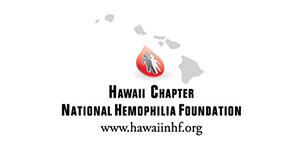
The Hawaii chapter joins NHF.

To further gather and share information about health issues, medical complications, and causes of death that affect people with bleeding disorders, such as inhibitors, the UDC surveillance system is revised and expanded and renamed Community Counts.

NHF launches Steps for Living program as the go-to online resource for life-stages education.
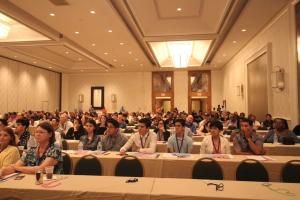
The CDC hosts its first inhibitor summit.

Results from CDC’s Hemophilia Inhibitor Research Study (HIRS), a pilot surveillance project conducted at CDC from 2006–2009, are published in the Journal of Thrombosis and Haemostasis. The findings from this project led to a modified testing method for inhibitors (antibodies) to hemophilia factor-replacement treatment products.
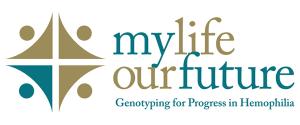
NHF launches "My Life, Our Future" genotyping program.
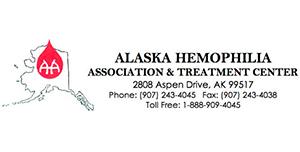
The Alaska chapter joins NHF.
The NHF State Based Advocacy Coalition (SBAC) program began in 2012 with five key states to respond to various advocacy challenges affecting access to care for the bleeding disorders community.

In 2013, three separate gene therapy trials for hemophilia begin at institutions across the country.

NHF joins the Twinning Program organized by the World Federation of Hemophilia with the Hemophilia Foundation of Nigeria.

Thanks to the advocacy of NHF and other organizations, the Affordable Care Act officially designates several types of health care providers, including hemophilia treatment centers, as essential community providers. This means that health insurance plans offered in health insurance marketplaces must include them in their networks.

NHF celebrates its 65th anniversary.

HANDI library goes digital.
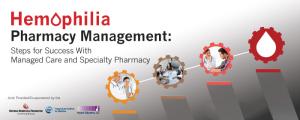
NHF hosts a Steps for Success event titled, "Hemophilia Pharmacy Management: Steps for Success With Managed Care and Specialty Pharmacy" that was designed to meet the educational needs of specialty pharmacists, home health pharmacists, health plan pharmacists, managed Medicaid pharmacists, medical directors, and other health care professionals with an interest in the management of patients with hemophilia.
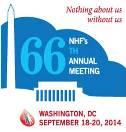
NHF hosts its 66th annual Bleeding Disorders Conference.

The National Hemophilia Foundation (NHF) conducted a summit meeting of stakeholders on von Willebrand disease (VWD) on November 21, 2014, in Washington, DC. The purpose of the summit was to discuss and develop a strategic approach for raising awareness of VWD and improving patient access to care in the evolving health care environment. The 38 summit participants included key figures in VWD research, care, and policy with representatives of such stakeholders as VWD patients and families, clinicians, payers, the pharmaceutical industry, and relevant federal agencies.
Following overviews of clinical and scientific aspects of VWD and patient perspectives and challenges, summit participants addressed four main issue areas: (1) recognizing and addressing stigma and marginalization, (2) clinical challenges, (3) hemophilia treatment center (HTC) and physician recognition and focus on VWD, and (4) organizational recognition and focus on VWD. For each issue area, the summit then moved to potential strategies and related next steps for NHF and VWD stakeholders to address the challenges and unmet needs.
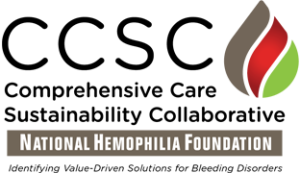
The Comprehensive Care Sustainability Collaborative (CCSC) convened in 2014 with two inaugural consensus meetings among health care stakeholders.

As part of the Hemophilia Inhibitor Study (HIRS), CDC gene sequences and develops a comprehensive list (CDC Hemophilia A and Hemophilia B Mutation Project known as CHAMPS) of the thousands of gene variants (or differences) that have been reported to cause hemophilia.

NHF launches Better You Know, an online risk assessment tool for people experiencing signs and symptoms of bleeding disorders.

NHF launches the Red Tie Challenge.

Thanks to NHF's advocacy, March officially becomes known as "Bleeding Disorders Awareness Month."

NHF partners with McMaster University to create guidelines for hemophilia management care models.

Dr. Jeanne Lusher, former MASAC president and a leading researcher of inhibitor antibodies, passes away.

In 2017, the foundation introduced the Guías Culturales program. Guías culturales, or cultural guides, are volunteers within the community who speak Spanish and have navigated care for themselves or family members.

NHF's signature fundraising event, the Spring Soiree, rebrands to become the Red Tie Soiree.
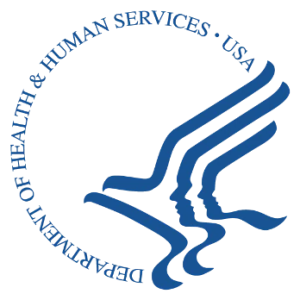
The National Hemophilia Foundation (NHF), Hemophilia Federation of America (HFA), and Hemophilia of Iowa (HOI) filed a complaint with the Office for Civil Rights at the U.S. Department of Health and Human Services (HHS) requesting that federal action be taken to end an Iowa insurer's discrimination against people with hemophilia. The complaint alleges Wellmark Inc. violated provisions of the Affordable Care Act (ACA) and effectively prevented hemophilia patients from accessing care when it carved certain counties in Iowa out of their ACA plans and then pulled out of the Iowa marketplace entirely. The complaint further alleges Wellmark violated the Health Insurance Portability and Accountability Act of 1996 (HIPAA) when it publicly stated it was providing health insurance coverage to a 17-year-old male with hemophilia at a cost of $1 million per month.
Hemophilia Memorial at the National AIDS Memorial Grove in Golden Gate Park opened in September 2017

NHF partners with the AIDS Memorial Grove and the Hemophilia Federation of America to open a Hemophilia Memorial Circle in Golden Gate Park.

NHF partners with local HTCs to provide support to the bleeding disorders community in Puerto Rico after the island is devasted by Hurricanes Irma and Maria.

NHF revises and republishes its popular publication "Playing it Safe."

MASAC updates and approves camp standards.

NHF launches the "Red Tie Campaign."

NHF announces it will partner with ASH, ISTH, and WFH to create clinical practice guidelines for the diagnosis and management of von Willebrand Disease (VWD).

The NHF Annual Meeting rebrands to become the "Bleeding Disorders Conference" at the annual gathering in 2018.
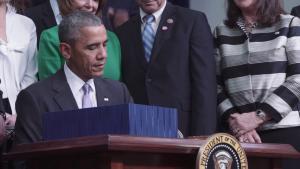
President Obama signs into law the Sickle Cell Disease and Other Heritable Blood Disorders Research, Surveillance, Prevention, and Treatment Act (S. 2465). This important legislation authorizes the U.S. Department of Health and Human Services (HHS) to award data collection grants to states, academic institutions, and non-profit organizations with the goal of better understanding the prevalence and distribution of heritable blood disorders, including sickle cell disease, as well as the associated health outcomes and complications of these disorders.

NHF celebrates its 70th anniversary.
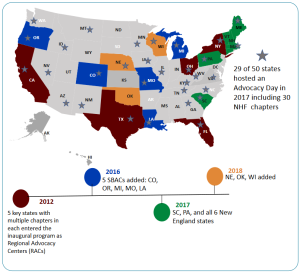
In its sixth year, the NHF SBAC program provides support to 21 states that include over 30 NHF chapters, representing thousands of families with bleeding disorders across the USA.

A government report found that three of the top 10 specialty drugs
in Medicaid had an average retail price in 2015 of over $20,000 per prescription -- one of the three was a hemophilia drug, and the other two were for hepatitis C.

NHF joins PAN, the Patient Access Network.
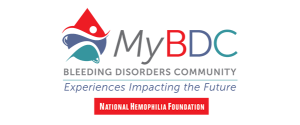
"MyBDC" -- NHF's patient dashboard -- launches.

Val Bias, NHF's CEO, retires after 11 years of service.
2020s
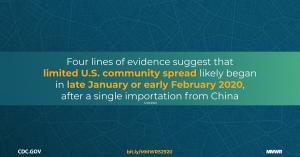
The first case of the novel coronavirus (COVID-19) is found in the USA.
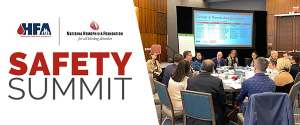
NHF and Hemophilia Federation of America (HFA) convened a Safety Summit in Washington, DC to discuss monitoring, educating and communicating issues around bleeding disorders product safety.
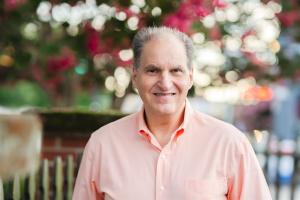
Dr. Leonard Valentino succeeds Val Bias as NHF CEO, becoming the first hematologist to assume this role.

With the guidance of NHF advocates, Rep. Darin LaHood of Illinois introduces H.R.5952 - The Hemophilia SNF Access Act, which aims to rectify a long-standing problem of Medicare beneficiaries with hemophilia and other bleeding disorders being able to access skilled nursing facilities (SNFs).

For the first time in BDC's history, the conference is announced as going virtual.

MyBDC -- NHF's patient dashboard -- rebrands to Community Voices in Research (CVR).
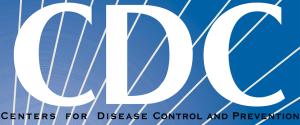
NHF enters another five-year cooperative agreement with the CDC to provide educational programming.
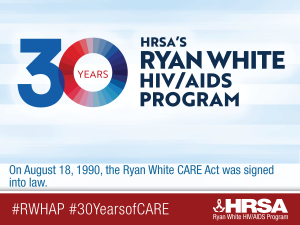
NHF honors the 30th anniversary of the Ryan White CARE Act.

An NHF survey found that 86 percent of all registered voters surveyed believe the government should require copay assistance to be applied to a patient's out-of-pocket costs.

The first COVID-19 vaccines are administered in the U.S.

NHF in collaboration with ASH, ISTH, and WFH, publishes guidelines on the diagnosis and management of von Willebrand disease.

NHF hosts a launch party for Super Seven, its new children’s book for kids with rare bleeding disorders.
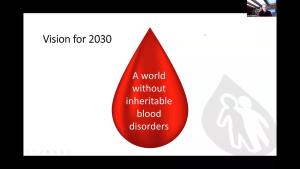
NHF refocuses its mission statement to reflect a renewed emphasis on research and an expanded scope to include inheritable blood disorders.

NHF launches Research Journal Club to bring researchers and community members together to discuss the latest science and innovative breakthroughs
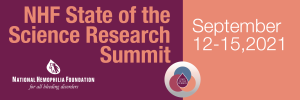
NHF hosts virtual State of the Science Research Summit to help shape the National Research Blueprint
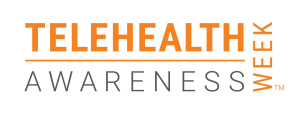
NHF becomes an endorsing partner of the first-ever Telehealth Awareness Week.

The Hemophilia SNF Access Act becomes law, thanks to the voices and concerns of NHF and HFA advocates.
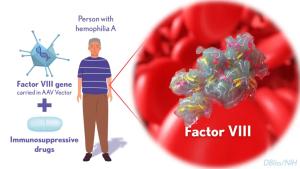
In a blog post, NIH Director Dr. Francis Collins says that "Gene therapy represents a possible cure for hemophilia A."
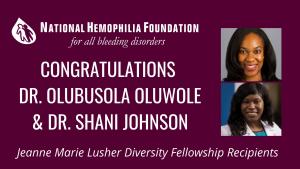
The first-ever recipients of the Jeanne Marie Lusher Fellowship are announced.

Val Bias, NHF's longtime CEO, passes away on December 30, 2021.

NHF announces that its newest fellowship, named in honor of Jeanne Marie Lusher, will prioritize diverse researchers.
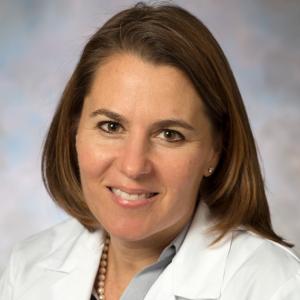
Dr. Amy Dunn becomes the second female physician to chair MASAC.

NHF launches its first-ever "Start the Conversation" campaign to raise awareness throughout Bleeding Disorders Awareness Month.

NHF hosts its first ever Health Equity Summit to start the conversation in ensuring equitable access and quality care for those with inheritable blood disorders.
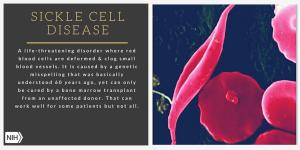
The NHLBI launched the National Blood Disorders Program, a public-private partnership.

NHF launches the Dr. Marion Koerper Research Fund to support new research initiatives.

The Judith Graham Pool Research Fellowship celebrates 50 years of progress, hope, and discovery.

The foundation hosts an inaugural summit focused on supporting the female and female-identifying population in Atlanta.

The foundation announces a rebrand -- changing the organization name and look to "National Bleeding Disorders Foundation" -- that is more inclusive of all inheritable blood and bleeding disorders.
Frequently Asked Questions
The National Hemophilia Foundation was founded in 1948.
NHF was founded by Robert and Betty Jane Henry, parents of a young boy with hemophilia. When their son, Lee, was born, the only treatment for hemophilia was blood transfusions. The life expectation for a person with hemophilia was around 24 years old. However, the Henrys were determined to do everything they could to make life better for their only son – including frequent blood transfusions from father to son.
To celebrate 75 years of hope, history, and progress, the organization is reflecting upon major milestones and accomplishments, and also looking toward the future. Follow NHF on social media to participate in anniversary-related trivia, and subscribe to HemAware to read monthly historical articles. Scroll down to see other ways you can get involved in the celebration, including printing a photo prompt to share your memories!
The organization has come a long way over the last seven and a half decades! Since its incorporation, NHF has grown to include dozens of chapters coast-to-coast, and represent, support, and advocate for those with inheritable blood and bleeding disorders beyond hemophilia. Explore the timeline to see more changes along the way.
Yes, please share your memories and involvement! We want to hear what you have to say. Send an email to communications@bleeding.org.
In late summer 2023, the organization will announce a rebrand that will be more inclusive and reflective of inheritable blood and bleeding disorders including hemophilia, von Willebrand disease, and others. To learn more, email communications@bleeding.org.
To request a source for a timeline fact, or to request something be added to the timeline, please email communications@bleeding.org with the "75th Timeline" in the subject line of your message.
Follow NHF
Connect with NHF by following the latest conversations on Twitter, Facebook, LinkedIn, Instagram, and YouTube. When sharing your conversations on social media, use the official hashtag, #NHF75.
Sign Up For Emails
Receive regular communications from NHF to learn more about 75th anniversary celebrations.
Donate
Make a donation to support patients and families for another 75 years.

Equip families with education and support
Offering education opportunities to families with blood disorders makes these rare conditions less frightening. Your gift can keep families up to date on how best to manage their conditions, while providing them with a supportive community.
Get Involved
There are many ways to join in a celebration of 75 years of history, hope, and progress:
Download a helpful PDF to learn more about some of NHF’s current flagship programs.
Email communications@hemophilia.org to share your historical moments and memories! You may be featured in an upcoming HemAware article or on NHF’s social media.
Pose with this photo prompt and share why you’re celebrating 75 years of support for the inheritable blood and bleeding disorders community.
Sign up for HemAware by June 1, 2023 to receive a special commemorative issue of the print edition of HemAware in summer 2023!
Read and share digital historical articles each month starting late January 2023.
Many chapters have rich and storied histories as well. Find your local chapter to learn more about their roots.
Read and share digital historical articles each month starting late January 2023.






